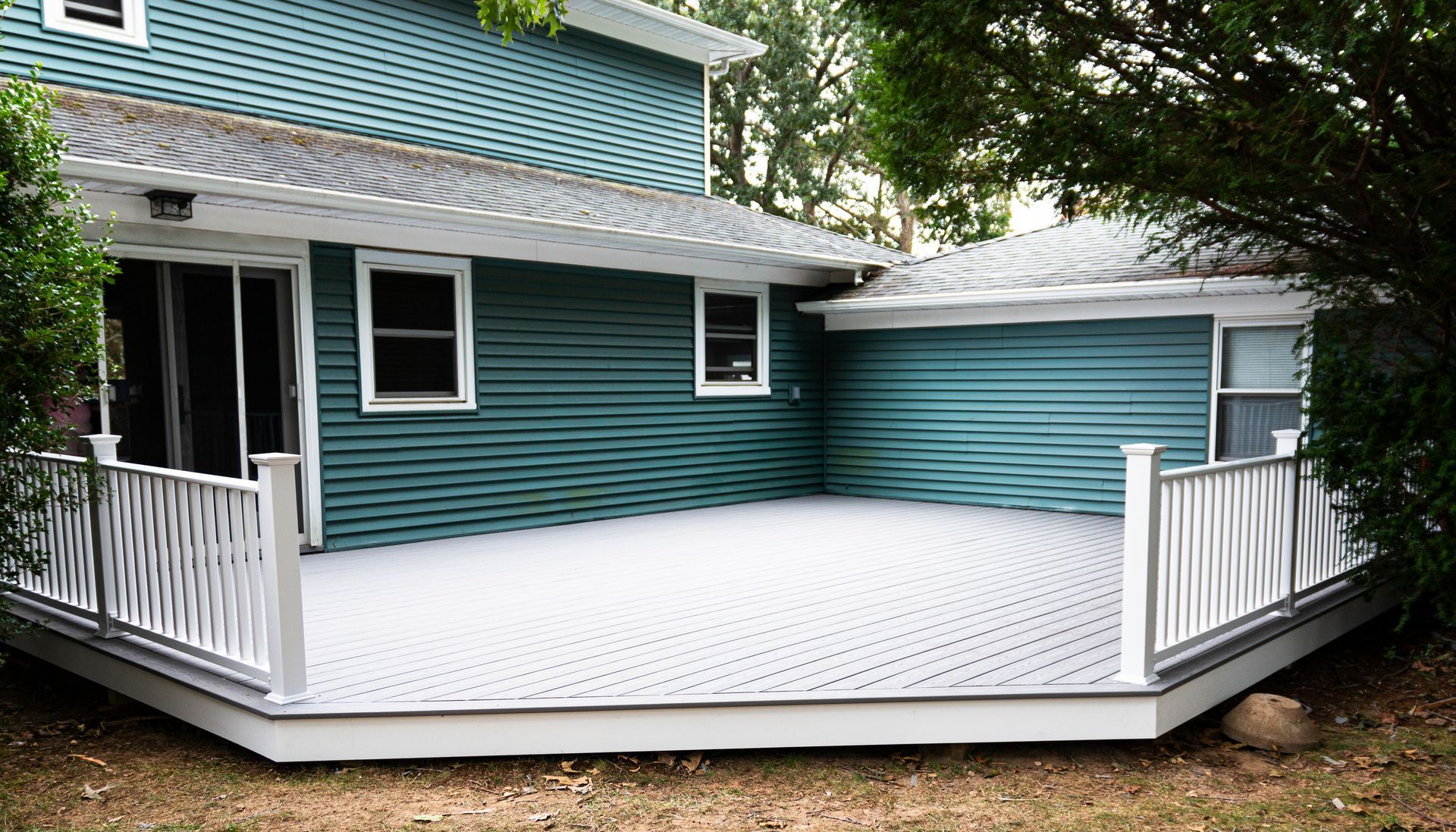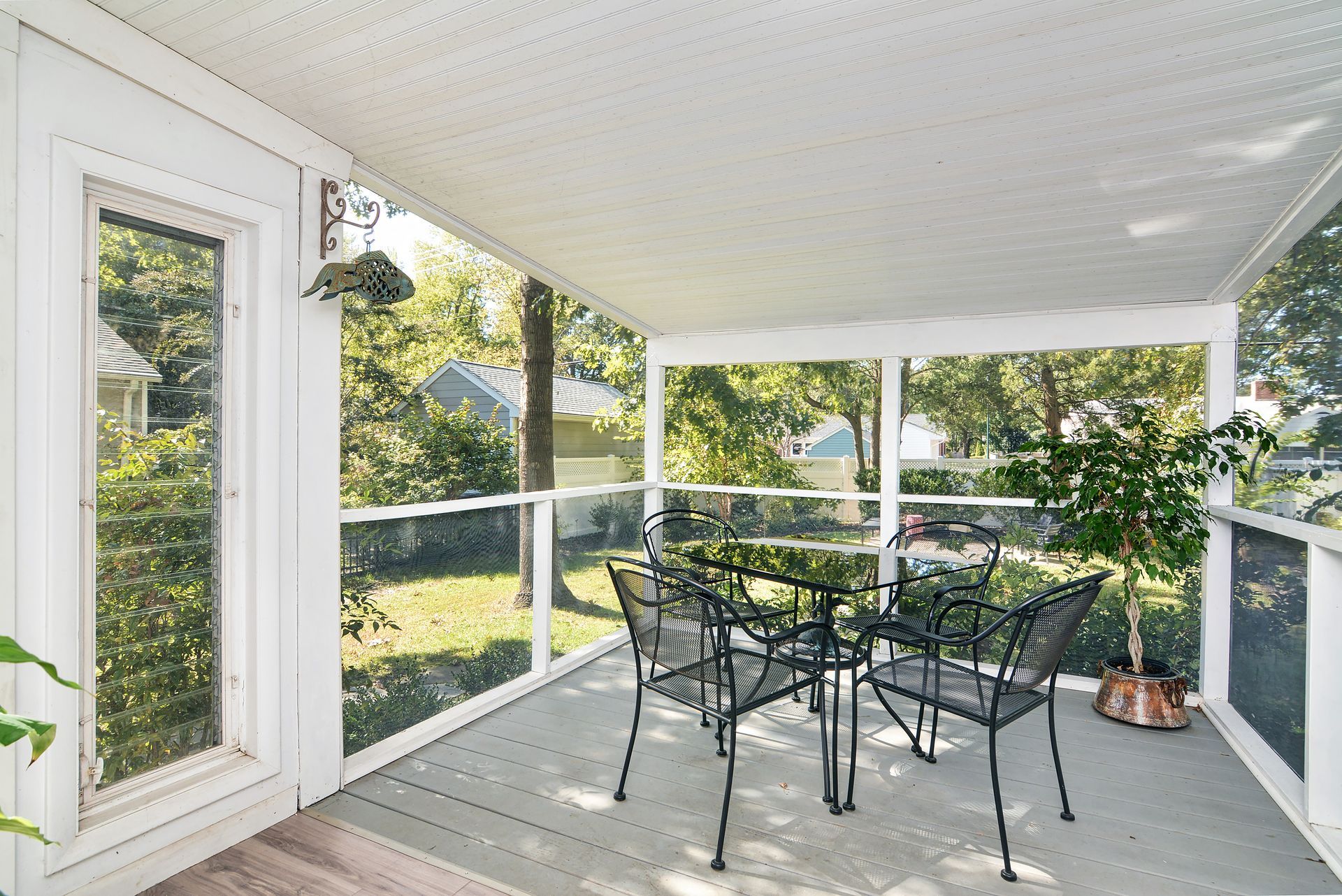Deck Types
Choosing the Right Decking for Your Home
When it comes to decking, there's a plethora of options to choose from, each offering its unique blend of aesthetics, durability, and maintenance requirements. Here are some popular types of decking materials:
- Pressure-Treated Wood: This is one of the most common and budget-friendly options. Typically made from pine, pressure-treated wood is infused with chemicals to enhance durability and resistance to rot, insects, and decay.
- Cedar and Redwood: Known for their natural beauty and resistance to decay and insects, cedar and redwood are popular choices for decking. They offer a rich, warm tone and are often chosen for their natural resistance to decay, though they may require some maintenance to preserve their appearance.
- Composite Decking: Made from a blend of wood fibers and recycled plastic, composite decking offers the look of wood without the maintenance. It's highly durable, resistant to rot, and comes in a variety of colors and textures. While initially more expensive than wood, it requires minimal upkeep over time.
- PVC Decking: PVC (polyvinyl chloride) decking is entirely synthetic and offers exceptional resistance to moisture, rot, and insects. It's highly durable and requires minimal maintenance, making it an attractive option for those seeking a low-maintenance decking solution.
- Aluminum Decking: Aluminum decking is lightweight, durable, and virtually maintenance-free. It's resistant to moisture, mold, and insects, making it an excellent choice for coastal or humid environments. Additionally, it stays cool to the touch, making it comfortable for bare feet in hot weather.
- Tropical Hardwoods: Woods such as ipe, tigerwood, and cumaru are known for their exceptional durability and natural resistance to decay, insects, and rot. While they offer unparalleled strength and longevity, they come with a higher price tag and may require specialized tools for installation.
- Plastic Decking: Plastic decking materials, such as polyethylene and polypropylene, offer durability and resistance to moisture, mold, and insects. They come in various colors and styles and are often made from recycled materials, making them an environmentally friendly option.
Get a free quote
Contact Us
8. Composite Wood-Plastic Decking: This type of decking combines the benefits of wood fibers and plastic, offering the natural look of wood with the durability of plastic. It's resistant to rot, insects, and moisture, and requires minimal maintenance.
Choosing the right type of decking depends on factors such as budget, desired aesthetics, maintenance preferences, and environmental considerations. By exploring these various options, homeowners can find the perfect decking material to suit their needs and enhance their outdoor living space.
Common Deck Repair Issues and How to Address Them
- Rotting Wood:
- Cause: Exposure to moisture and fungal growth can lead to wood rot, especially in areas where water tends to accumulate.
- Solution: Replace any rotted boards promptly. Apply wood preservatives or sealants to protect against future moisture damage. Ensure proper drainage to prevent water pooling on the deck surface.
- Loose or Damaged Deck Boards:
- Cause: Constant foot traffic, weather exposure, and fastener corrosion can cause deck boards to become loose or damaged over time.
- Solution: Tighten or replace loose screws and nails. For severely damaged boards, consider replacing them entirely. Use corrosion-resistant fasteners for improved durability.
- Cracks and Splits:
- Cause: Exposure to fluctuating temperatures and moisture can cause wood to expand and contract, leading to cracks and splits.
- Solution: Fill small cracks and splits with wood filler or epoxy. Sand the area smooth once the filler has dried. For larger cracks or splits, consider replacing the affected boards.
- Warping and Cupping:
- Cause: Uneven moisture absorption and inadequate ventilation can cause deck boards to warp or cup, compromising their structural integrity.
- Solution: Install proper ventilation beneath the deck to allow air circulation. Replace warped or cupped boards, ensuring proper spacing and fastening to prevent future issues.
- Rusty or Corroded Fasteners:
- Cause: Exposure to moisture and corrosive elements can cause fasteners such as screws and nails to rust or corrode over time.
- Solution: Replace rusty or corroded fasteners with stainless steel or galvanized alternatives, which are more resistant to corrosion. Regularly inspect and replace fasteners as needed to maintain structural stability.
- Ledger Board Issues:
- Cause: Improper installation or water infiltration behind the ledger board can lead to rot, weakening the connection between the deck and the house.
- Solution: Inspect the ledger board for signs of rot or water damage. Replace any compromised sections and ensure proper flashing and sealing to prevent water intrusion. Consider hiring a professional for ledger board repairs to ensure structural integrity.
Need immediate service?
We're available 24-hours a day, 7 days a week.
Adding Value to Your Home with a Well-Maintained Deck
A well-maintained deck can significantly elevate the value and appeal of your home. Beyond just being a functional outdoor space, a carefully tended deck can become a focal point for leisure, entertainment, and relaxation. Here's how you can add value to your home through the upkeep and enhancement of your deck:
- Regular Cleaning and Maintenance: Keep your deck clean by sweeping away debris and washing it periodically. Regular maintenance such as sealing, staining, and repairing damaged boards not only keeps it looking good but also prevents costly repairs in the long run.
- Upgrade Materials and Design: Consider upgrading your deck with high-quality materials such as composite decking or exotic hardwoods. These materials not only offer durability and longevity but also add aesthetic appeal to your outdoor space. Additionally, incorporating innovative design elements like built-in seating, pergolas, or lighting can further enhance the functionality and attractiveness of your deck.
- Landscaping and Greenery: Integrate landscaping elements around your deck to create a seamless transition between your indoor and outdoor spaces. Planting trees, shrubs, or installing flower beds not only adds beauty but also provides privacy and shade, making your deck more inviting and comfortable.
- Outdoor Furnishings and Accessories: Invest in quality outdoor furniture and accessories to furnish your deck stylishly. Comfortable seating, weather-resistant rugs, and decorative accents can transform your deck into a cozy retreat for relaxation or entertaining guests.
- Create Multi-Seasonal Appeal: Extend the usability of your deck throughout the year by incorporating features that cater to different seasons. For example, installing a fire pit or outdoor heater can make your deck cozy and inviting during cooler months, while incorporating features like awnings or umbrellas can provide shade and protection from the sun during the summer.
- Ensure Structural Integrity: Prioritize the structural integrity of your deck by regularly inspecting it for signs of wear and tear, such as rotting wood, loose fasteners, or unstable railings. Addressing any structural issues promptly not only ensures the safety of your deck but also maintains its value over time.
- Highlight Energy Efficiency: If you're considering adding amenities like outdoor kitchens or lighting, opt for energy-efficient options that not only reduce utility costs but also appeal to environmentally conscious buyers.
By investing time and effort into the maintenance and enhancement of your deck, you can significantly increase the value of your home while creating a beautiful and functional outdoor space for years to come.
Deck Questions and Answers
Frequently Asked Questions

